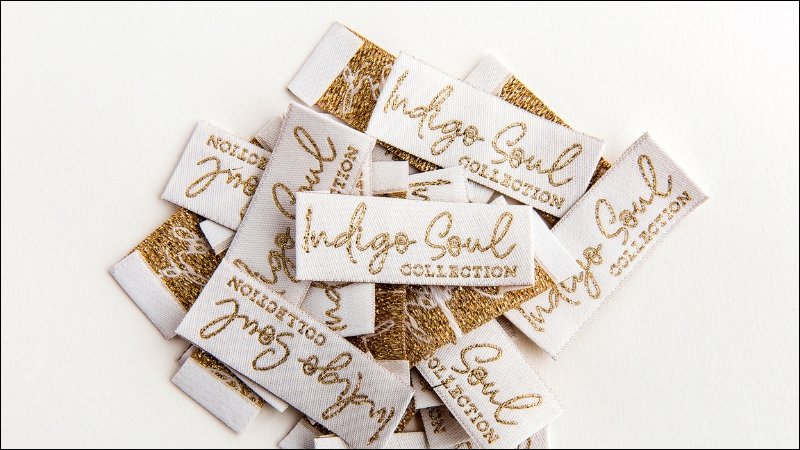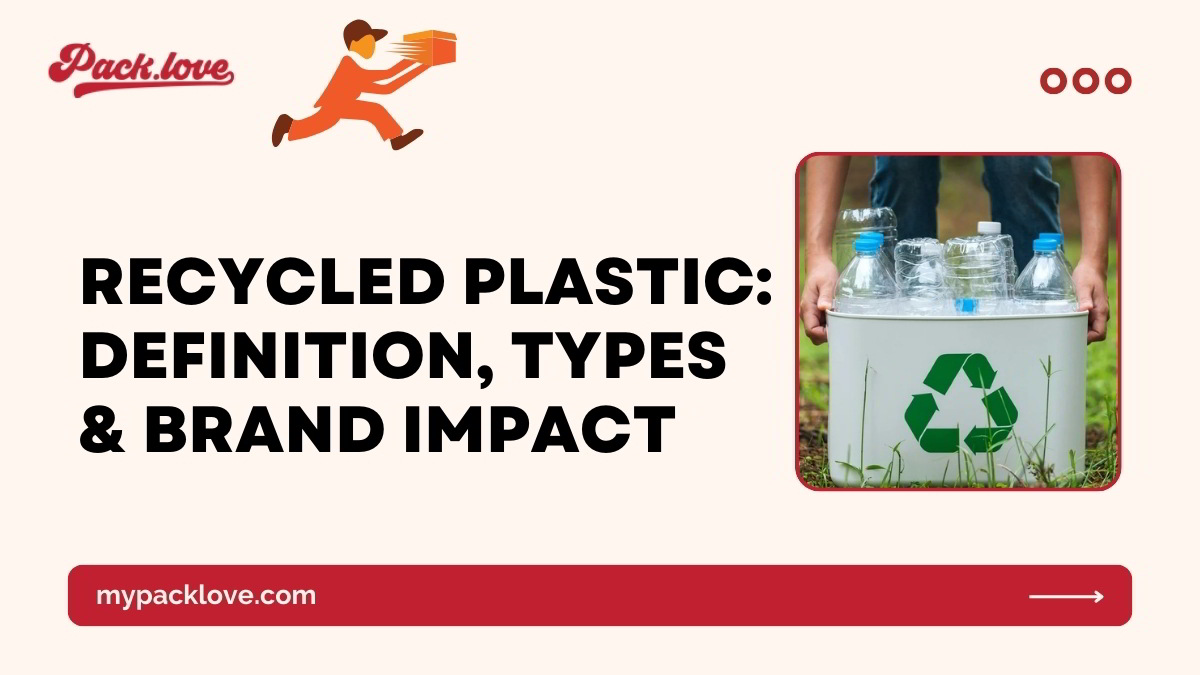Miter Fold Labels: Clean Finish And Secure Attachment
A miter fold label represents a specific label finishing technique used in the garment industry, distinct from simple folding methods. This label type involves folding the short ends of a flat label strip inward at a precise 45-degree angle. Subsequently, these angled ends are folded again, typically upward or backward parallel to the main label body, creating small sewing tabs.
This construction method neatly encases the raw fabric edges. While the term “miter fold” also exists in woodworking, referring to joining two pieces at a 45-degree angle to form a corner, its application in apparel trims focuses on creating attachment points on a single piece of label fabric. Understanding this distinction is key to specifying the correct finish for garments.
1. Key Visual Characteristics: Identifying a Miter Fold
The most recognizable feature of a miter fold label, especially after attachment, is its angled ends which form small sewing loops or tabs. These tabs are designed to be captured within a garment seam. This results in a clean, integrated visual appearance where the main body of the label lies flat or slightly raised, and the attachment points are concealed within the construction of the garment.
This distinctive look contrasts sharply with other common label finishes. For example, an end fold label shows folded-under edges often topstitched onto the garment surface, while a center fold label is typically looped over an edge or sewn into a seam as a folded piece. The miter fold’s integration offers a unique element for brand presentation and specific label placement scenarios.

2. The Anatomy of the Fold: A Closer Look
The folding process for creating a miter fold label follows specific steps to achieve its characteristic shape and clean finish:
- Begin with the flat, rectangular strip of the fabric label.
- Fold both short ends inward towards the back of the label at a sharp 45-degree fold. The accuracy of this angle is crucial for the final appearance.
- Fold these newly created angled edges upward (or sometimes folded inward again towards the main label body, depending on the specification), parallel to the long edges of the label. This second fold creates the sewing tabs and fully encapsulates the raw edges of the label material, preventing fraying.
This method of label construction ensures all unfinished edges are hidden within the folds, contributing to the label’s neat appearance and durability after sewing. This precise method defines the textile folding technique specific to miter fold labels.
3. Common Application Methods: Sewing into Seams
Miter fold labels are primarily engineered for insertion into seams during apparel manufacturing. The sewing technique involves tucking the formed tabs or loops into the seam allowance (the fabric area between the stitching line and the raw edge) before the seam is stitched closed. As the main garment seam is sewn, the needle passes through the seam allowances and the label tabs, creating a very secure attachment.
This method integrates the label directly into the garment construction, offering an integrated look rather than appearing as an applied patch. Common placements include neckbands, side seams, and waistbands where structural seams are available. This specific label application relies on careful alignment during the stitching technique.
3.1 Achieving a Premium, Clean Finish
One of the primary advantages of using a miter fold is the premium finish achieved. By enclosing the label’s raw edges within the folds, the potential for fraying is eliminated. This results in a neat, tidy appearance where the label meets the garment fabric.
This detail contributes significantly to a more polished and professional appearance. Such attention to detail in construction often translates to a higher brand perception, suggesting quality construction and care in the manufacturing process. This meticulous finishing elevates the overall feel of the garment.
3.2 Enhancing Durability and Longevity
The method of attaching miter fold labels inherently enhances durability and longevity. Because the label is anchored within a structural seam via its tabs, the secure attachment is robust, capable of withstanding repeated washing and wear cycles better than labels merely stitched onto the surface.
This integration into the garment manufacturing process makes the label less likely to detach or fray over time. Often, woven label materials are chosen for miter folds, leveraging their inherent strength alongside the secure sewing method to ensure lasting quality construction and textile performance.
3.3 Elevating Brand Perception and Detail
Choosing a miter fold label is often a deliberate design element that subtly communicates quality to the customer. Beyond simple identification, this type of label finish acts as a quality indicator. The clean integration and the evident care required for proper application signal attention to detail, contributing positively to the customer impression.
For a clothing brand, using finishing touches like miter folds can enhance the perceived value of the product and reinforce the desired brand identity. This detail becomes part of the overall brand presentation and apparel branding strategy.

4. Miter Fold vs. Other Common Folds (End Fold, Center Fold)
Understanding the differences between various label fold types helps in selecting the most suitable option for specific needs. Besides the miter fold, two other common types are the end fold and the center fold (sometimes called a loop fold).
An end fold involves folding the short ends of the label under, creating a clean edge typically sewn flat onto the garment. A center fold involves folding the label in half, creating a loop often sewn into a seam or over an edge like a cuff. This label comparison highlights distinct characteristics in appearance, application, and suitability.
| Feature | Miter Fold | End Fold | Center Fold (Loop Fold) |
|---|---|---|---|
| Appearance | Angled tabs hidden in seam, main body flat | Flat application, folded ends visible | Folded loop, often sticking out or folded over edge |
| Edge Finish | Raw edges fully enclosed in folds | Raw edges folded under, hidden | Raw edges usually hidden inside the fold/seam |
| Sewing Method | Tabs sewn into seam allowance | Sewn around perimeter or top/bottom edges | Sewn into seam or looped over edge and stitched |
| Common Placement | Necklines, side seams, waistbands | Necklines (yoke), pockets, exterior branding | Side seams, necklines, sleeve cuffs, bottom hems |
| Logo/Info Suitability | Good for branding, care info placement limited | Versatile for logos, branding, care info | Ideal for branding on loop, care info inside |
| Relative Complexity | Moderate (requires precise folding & sewing) | Simple | Simple to Moderate |
Reviewing these pros and cons related to label placement, desired look, and sewing technique is essential when deciding on the best label fold type.
5. Factors Influencing Choice (Garment Type, Fabric, Cost, Production)
Selecting a miter fold label involves several practical considerations. The garment type plays a role; miter folds integrate well into items with accessible seams like shirts, jackets, and trousers, but might be less suitable for very delicate or unstructured pieces. Fabric compatibility is another factor; while versatile, inserting the tabs can potentially cause slight puckering on extremely lightweight or sheer materials.
Careful sewing precision is needed during the production process to align the tabs correctly within the seam allowance, impacting quality control. There might be a slight cost consideration, as the folding is more complex than simple cuts, potentially adding minimal cost per label and requiring skilled labor for application. Understanding textile folding limitations and production capabilities is crucial.
5.1 Ideal Garment Placements
Miter fold labels are ideally suited for specific locations on garments where they can be securely integrated into seams and offer a clean presentation. Common placements include:
- Back Neck: Often used for the main brand label, inserted into the neckband seam for a premium look.
- Side Seam: Frequently used for smaller brand labels or care/content labels, tucked neatly into the vertical side seam.
- Waistband: Integrated into the top seam of waistbands on trousers, skirts, or shorts.
- Cuffs: Can sometimes be inserted into cuff seams on sleeves.
These locations work well because they provide a stable seam for attachment, aligning with standard garment construction practices. The placement choice often depends on whether the goal is primary branding (neck label, seam label) or supplementary information within the context of apparel manufacturing.

5.2 Design and Specification Tips for Suppliers
When ordering custom labels with a miter fold finish, providing clear specifications to your supplier is essential to avoid errors and ensure the final product meets expectations. Consider these points for effective supplier communication:
- Clearly Specify “Miter Fold”: State the required finish explicitly.
- Provide Unfolded Dimensions: Give the exact length and width of the label strip before folding.
- State Finished Dimensions: Indicate the desired width and height of the label after folding is complete.
- Specify Tab Size/Seam Allowance: Define the required height of the folded tabs that will be inserted into the seam allowance. A standard allowance might be 1/4 inch (approx. 6mm), but confirm based on your garment’s construction.
- Review Artwork Layout: Ensure critical elements of the artwork layout (like logos or text) are positioned correctly on the main body, avoiding the areas that will be folded into tabs.
- Request a Sample/Proof: If possible, ask for a physical sample or a digital proof showing the fold lines and dimensions before full production commences. Adhering to these technical requirements streamlines the manufacturing process for your clothing brand.
6. Related Questions
6.1 Can miter fold labels be used on any fabric?
Generally, miter fold labels are versatile, but fabric compatibility requires consideration. They perform best when sewn into seams on medium-weight to heavier fabrics where the seam provides stable anchoring without distortion. Challenges can arise with very lightweight, delicate, or sheer fabrics.
The bulk of the folded tabs, though minimal, might cause slight puckering or be difficult to conceal neatly within the seam allowance of such materials. Assessing the specific textile properties and garment weight is advisable. Testing the application on the specific fabric during sample development can prevent issues related to sewing challenges in bulk production.
6.2 Are miter fold labels significantly more expensive than other folds?
The label cost for miter folds might be slightly higher than simpler finishes like a straight cut or a basic end fold. This potential increase stems from the additional steps involved in the manufacturing complexity of the precise 45-degree folds and the secondary fold creating the tabs.
However, the difference per label is often minimal. When making a price comparison, weigh this small potential cost consideration against the enhanced aesthetic and perceived value proposition that a premium finish like a miter fold provides. Obtaining quotes for different fold types from your supplier offers the clearest picture.
6.3 How do I ensure the miter fold is sewn correctly during production?
Ensuring correct application relies heavily on clear communication and process management. Provide detailed sewing instructions and technical specifications in your tech pack, including diagrams illustrating the exact placement and required seam allowance for the label tabs. Supplying a physical pre-production sample showing the correct attachment is highly beneficial for manufacturer communication.
Emphasize the need for sewing precision during operator training. Implement rigorous quality control checks specifically inspecting label placement accuracy, stitch quality around the tabs, and the overall neatness according to production standards.
Explore more:
Understanding the characteristics, benefits, and application methods of miter fold labels empowers businesses to make an informed decision. This specific fold offers a compelling combination of a premium finish, enhanced durability, and a subtle signal of attention to detail that can elevate product presentation. Recognizing when and how to use this technique effectively is part of a smart brand strategy.
By considering the factors outlined – from visual appeal and construction to cost and production – you can strategically choose the label finishes that best align with your brand’s quality standards and customer expectations. Should you require further guidance or wish to explore specific label options tailored to your garments, seeking expert consultation can provide valuable insights.


















